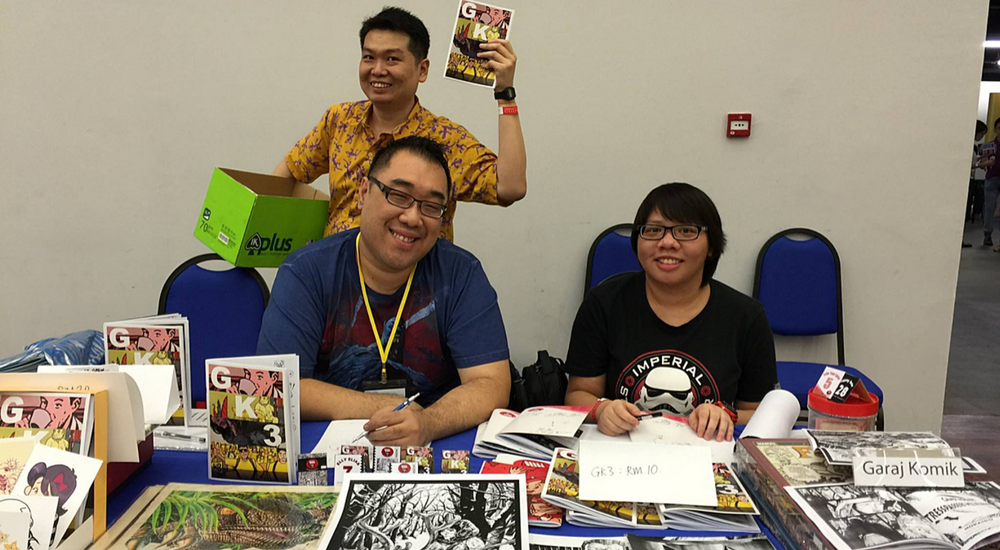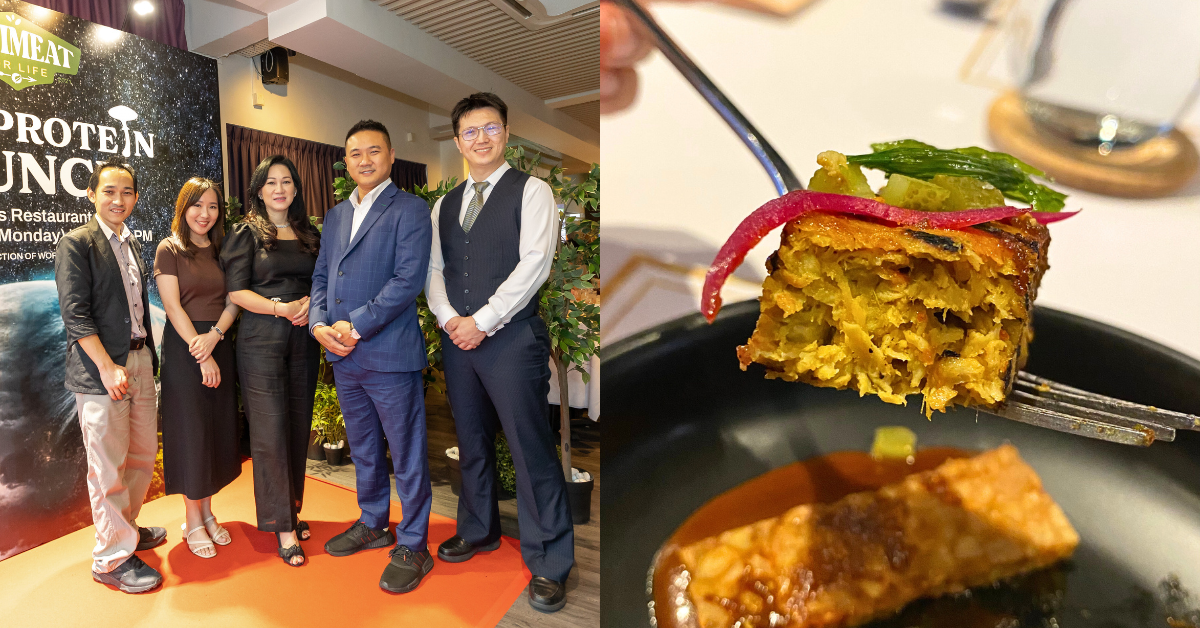Ever since Marvel launched their ultra successful bid to superhero movies, renewed attention has now been directed to the comics industry worldwide. And manga reads are ever popular.
Unfortunately, the good fortune does not seem to have impacted our local comic giants. Popular comic translator and publisher Tora Aman has recently rolled their carpets after giving us years of Doraemon and Detective Conan, and another manga translator Comics House also closed their doors after introducing Dragon Ball to us.
In Malaysia, local publishers have seen something of a drop as local comic creators flock online to self-publish, now able to express themselves without strict publication limitations. This reflects an all-too-familiar shift, as we go to value the virtual over the “real”.
Despite this, the team behind Garaj Komik doggedly defy that convention to continue publishing physical copies of their zine. Selling for RM10 per copy, the team behind the zine are comic lovers with different backgrounds. Now compiling the sixth edition, they unite to showcase works by amateur comic artists.
Aimless, But With Purpose

Drawing in professional names such as Stephanie Yong, Sliz Supertramp, Arif Rafhan and Aku Napie following their third issue, the team enjoys the learning of tolerance and the back-and-forth that comes with collaborating. Of course, not all artists leave on the best of terms, but that’s business.
When we asked the team the usual questions, they came back to us with a surprising answer.
“You may not believe it, but we have no aim in Garaj Komik. When I was discussing the concept with Joshua Chung, we were merely bouncing ideas on how to fulfill my own personal vanity to get my artwork printed.”
But fellow teammate Joshua, as stated above, would beg to differ. “Making comics is not easy, more so doing it alone. Garaj Komik aims to give those who aspire to make a comic a chance to collaborate. Short comics give writers and artists a great opportunity to experiment, practice and learn compared to ‘solo-doing’ a long graphic novel at the risk of a burnout.”

And similar to the dual nature of their aim, the compilation both has a set schedule, and no specific schedule at the same time. They only publish once the compilation of amateur artists is complete, but they also debut their newest issues at public comic events to do the hard sell directly into the hands of people who would be interested.
Their Business Model: They Don’t Pay Their Artists

GK runs on a collaborative profit-sharing model. They don’t pay the artists or writers for their works, but as long as as they contribute to an issue, they earn the right to sell said issue. So, if an artist or writer sells the issue they’ve contributed to, the profit goes directly to the seller. So it’s a bit of a side hustle for the artists as well to get the word out.
And to their credit, their business tactics allow them to keep going. As fans of the scene themselves, they understand where and how to target their ideal demographic, and distribution points of events and their Facebook page are enough to keep the business both passionate and sustainable.

The team of approximately 20 individuals pursues comics as a passion project on top of their day jobs to publish ‘indie’ stories that may be darker and edgier.
That being said, by the team’s own admission, apart from the gore the content is usually PG-13. But who knows what the future holds?
“Obviously there are concerns about how our 4th comic was darker compared to our earlier issues,” said Joshua. “To us, it’s just a shift of demographics as we learn more about our customer one volume at a time. The majority had no issue with our change in direction.”
Staying Offline

When Vulcan Post asked about keeping their business hardcopy, Heng Kok said with a chuckle “Mostly for the vanity of seeing your work printed and the feeling of holding it in your hands.”
“Digital comics are the ‘in’ trend. In our GK discussion, we did consider publishing the works as web comics. We are not abandoning the idea, but, I gotta admit that having them printed leave something for my kids and the world to remember me by.”
Lim Yue Lynn chimes in to say, “Family heirlooms.”
And as someone with personal interest in comics myself, I completely understand this drive towards hard copies, especially for the many comic collectors in our niche circles. There’s pros and cons of course, but who knows? A Garaj Komik issue may one day be the sought-after comic for being the starting point to a critically-acclaimed artist.
Nevertheless, they’re happy to utilise other aspects of social media for business. According to Heng Kok, “It is indeed challenging. However, I am grateful we are living in the era of convenience. It’s easy to edit your work, it’s easy to print your books, it’s easy to market it through social media sites. Challenging, but I’ll do this again.”
The Stigma Faced By Comic Artists

Some would accuse the comic artists of Malaysia of having no originality, but the team would beg to differ. Wallace of Garaj Komik asks us to look at the works of Lat, Gila-Gila and some locally published comics that have their own style. Lynn would point out publishers like House of Cartoon and Comic Malaysia (at Taman Botani Perdana in Kuala Lumpur).
But influence is always part and parcel of creation. According to Kuah Joo Khai, “Copying makes the world go round. In the 1950s, Astro Boy had his eyes ‘copied’ from Betty Boop’s. In the 1860s, French artists ‘copied’ Japanese ukiyo-e prints, which led to no less than the Art Nouveau movement. To look at it positively—copying paves the way to evolution (provided the artist is conscious about it)!”
Arif Rafhan, or affectionately nicknamed Apan would then say that no matter the influence, localisation plays a part. “We’ve localised our comic scene back in the late 70s and throughout the 80s from the Western style but since then, the manga invasion has been staying here for quite awhile. It’ll take time for local comic artists to localise their style to fit local taste, but it’s a chicken and egg story; do the readers want it? Or are the artists willing to localise? Or does the publisher dare to change? But we have to start somewhere, as long as everyone contributes and keep on churning new materials to expedite the maturity of our comic scene.”

Garaj Komik aims to be inclusive of all styles, be it inspired from Japan or America. Creativity should know no bounds, and local comic artists deserve to to be given a chance to shine on paper, despite modern proclivities. And Garaj Komik offers an avenue for that.
Some of the images in this article are actual snapshots of art that will be featured in the upcoming issue of Garaj Komik 6, slated for a May launch. Pre-orders can be made by leaving a message at their page.

Feature Image Credit: Lim Yue Lynn, Wallace Destiny and Joshua Chung by Garaj Komik









